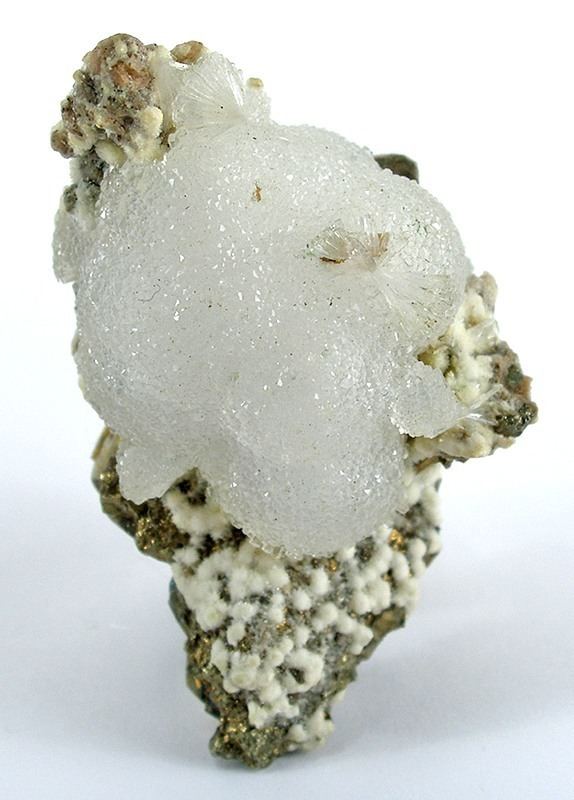Strunz classification 9.DG.10 | Crystal system Orthorhombic | |
 | ||
Formula(repeating unit) Ca5Si6O16(OH)2·4H2O, or;Ca5Si6(O,OH)18·5H2O Crystal class Disphenoidal (222)H-M symbol: (2 2 2) Unit cell a = 11.17 Å, b = 7.38 Åc = 22.94 Å; β = 90°; Z = 4 | ||
Tobermorite is a calcium silicate hydrate mineral with chemical formula: Ca5Si6O16(OH)2·4H2O or Ca5Si6(O,OH)18·5H2O.
Two structural varieties are distinguished: tobermorite-11 Å and tobermorite-14 Å. Tobermorite occurs in hydrated cement paste and can be found in nature as alteration mineral in metamorphosed limestone and in skarn. It has been reported from the Maqarin Area of north Jordan and in the Crestmore Quarry near Crestmore Heights, Riverside County, California.
Tobermorite was first described in 1880 for an occurrence in Scotland, on the Isle of Mull, around the locality of Tobermory.
Use in Roman concrete
Aluminium substituted tobermorite is understood to be a key ingredient in the longevity of ancient undersea Roman concrete, according to the American Ceramic Society.
